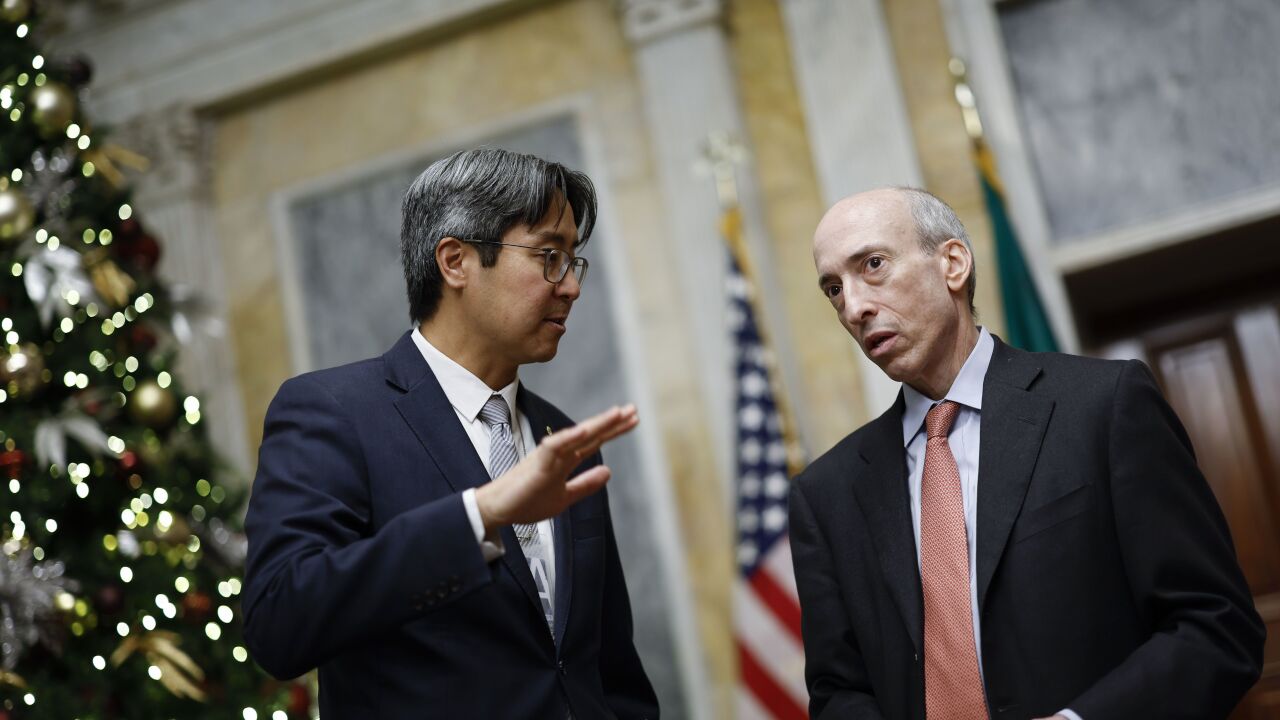Stablecoins
How are banks approaching dollar-backed digital assets (stablecoins)?
Stablecoins have moved from the edge of the
Banks are testing stablecoins for cross-border payments, liquidity management, and digital wallets. Some are also exploring how stablecoins can support interbank transactions or be issued directly by regulated institutions. As the landscape takes shape, stablecoins are starting to look less like an experiment and more like infrastructure.
-
Federal Reserve Vice Chair for Supervision Michael Barr is set to give his first dedicated remarks on cryptocurrencies this week, and observers are looking for concrete examples of what regulators are going to do next in the volatile sector.
March 7 -
The Supreme Court's insistence that Congress expressly authorize regulatory action on 'major questions' is destined to run afoul of the administration's efforts to set rules of the road for cryptocurrency.
March 7 American Banker
American Banker -
Acting Comptroller of the Currency Michael Hsu compared FTX's unwinding to the collapse of Bank of Credit & Commerce International, which similarly operated across borders to evade regulatory scrutiny.
March 6 -
The move comes after several banking regulators warned financial institutions they supervise of the dangers of exposure to crypto, including volatility.
March 5 -
Nationwide Building Society and HSBC Holdings toughened limits on retail customers' access to cryptoassets in the last week, becoming the latest U.K. banks to impose curbs after industry scandals and regulatory warnings.
March 2 -
Jack Dorsey's digital payment company Block said it will be using its own bitcoin reserves to provide liquidity to bitcoin's Lightning Network, a protocol meant to make transactions on the blockchain more efficient.
March 2 -
Sens. Cynthia Lummis, R-Wyo., and Kirsten Gillibrand, D-N.Y., said that the bill would address some concerns from various regulators, but will steer clear of addressing access to Federal Reserve master accounts.
March 2
The first three months of the year coincide with the start of President Donald Trump's second term in office. Investors are likely to be more interested in banks' outlooks amid swings in tariff policy than the first-quarter results.
Frequently Asked Questions:
How are banks approaching dollar-backed digital assets (stablecoins)?
Stablecoins have moved from the edge of the crypto, world to the center of policy and banking conversations. As regulators and banks weigh their role in payments, settlement, and reserves, this page follows the developments — from early pilots to proposed legislation.
Banks are testing stablecoins for cross-border payments, liquidity management, and digital wallets. Some are also exploring how stablecoins can support interbank transactions or be issued directly by regulated institutions. As the landscape takes shape, stablecoins are starting to look less like an experiment and more like infrastructure.
Why are banks paying attention to stablecoins?
Stablecoins are increasingly viewed as a potential upgrade to legacy payments systems. Banks are evaluating them for settlement, remittances, cross-border transactions, and tokenized deposit models.Are banks issuing their own stablecoins?
Some are exploring the option. Institutions like JPMorgan (with JPM Coin) and new entrants like PayPal are piloting bank-issued stablecoins, while others are watching regulatory developments before moving forward.How do stablecoins impact compliance and risk?
Issues include KYC/AML enforcement, cybersecurity, operational risk, and how reserve assets are held and reported. Banks exploring stablecoin activity must weigh both technological benefits and regulatory scrutiny.How are regulators responding to stablecoin innovation?
Congress is debating stablecoin-specific bills focused on reserve backing, issuer licensing, and oversight. The Federal Reserve, OCC, and state regulators are also shaping how bank involvement in stablecoin activity is supervised.How are banks using stablecoin?
Banks are using stablecoins to speed up cross-border payments, manage liquidity across global branches in real time, and test new forms of settlement between institutions. Some are integrating stablecoins into retail-facing digital wallets, while others are exploring interbank networks built on tokenized payments. These efforts are less about crypto speculation and more about making money move faster, with greater transparency and fewer intermediaries.- Real-time cross-border payments
- Internal liquidity management
- Retail-facing digital wallets
- Interbank tokenized payment networks
Top banks investing in stablecoin
List of institutions with greatest investment in stablecoin:- JPMorgan Chase – JPM Coin
- Custodia Bank – Avit Tokens
- Citigroup - Citi Token Services
- Societe Generale - USD CoinVertible
- Bank of America - Name yet to be released
- Fifth Third - Name yet to be released
- U.S. Bancorp - Name yet to be released









